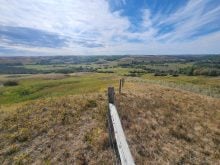A Sask. program has trained 25 pilots — who normally spray crops for pests and disease — to use planes to dump water
Aerial applicators could be on firefighting duty this summer in Saskatchewan.
Twenty-five pilots who normally spend their time spraying crops for pests and disease have been trained to use their planes to dump water.
Carrot River MLA Fred Bradshaw, who was an aerial applicator for more than two decades, initiated the program.
He had, on occasion, used his plane to help his local fire department.
“I guess what I was doing was illegal,” he said with a chuckle.
“You’re supposed to have an operating certificate.”
Read Also

Pakistan reopens its doors to Canadian canola
Pakistan reopens its doors to Canadian canola after a three-year hiatus.
However, he said he knew the value of getting a plane to dump water on a stubble fire as early as possible to minimize spread, and the need became obvious after last fall’s major fires.
He called his friend Chip Kemper of Queen Bee Air Specialties in Idaho, who teaches fire suppression to pilots there.
Kemper taught the first single engine air tanker firefighting course in Prince Albert, Sask., over the winter and now more want to sign up.
“This is something I have wanted for quite some time,” said Bradshaw.
“I knew that it worked.”
Each plane has a dump door, and it’s a matter of filling the hopper with water and possibly a foam adjuvant, he said.
There are aerial applicators all over the province who could be valuable assets in fighting fires.
There are still a few things to work out before the applicators can take to the skies. Radios in the planes must have the 911 channel in addition to the land location in their GPS systems.
“We have to train local fire departments about the hazards and how do they want us to approach the fire,” Bradshaw said.
The pilots won’t head to a fire unless they are called. The cost will be borne by the rural municipality that makes the call.
Premier Scott Moe highlighted the initiative and thanked Bradshaw at the Saskatchewan Association of Rural Municipalities annual convention earlier this year.
“The cost of making this service available to the municipalities where you live and where I live was very minimal, but the potential benefit is quite massive,” Moe told the delegates.
“You see Chip Kemper, he provided his services for free at Fred’s request.”
A second course could be held next winter when the applicators are available for training.
















